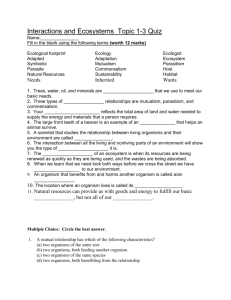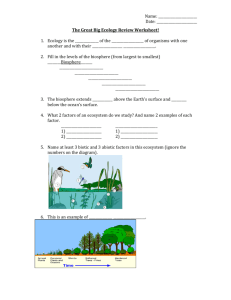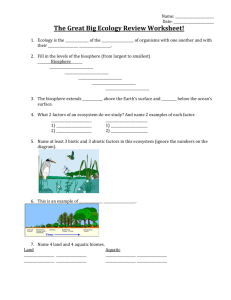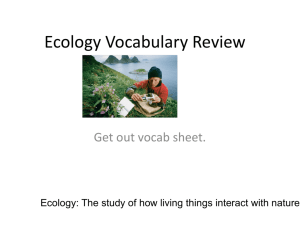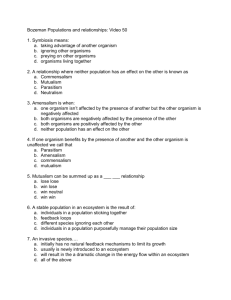Population Ecology & Symbiosis Notes Population Ecology
advertisement
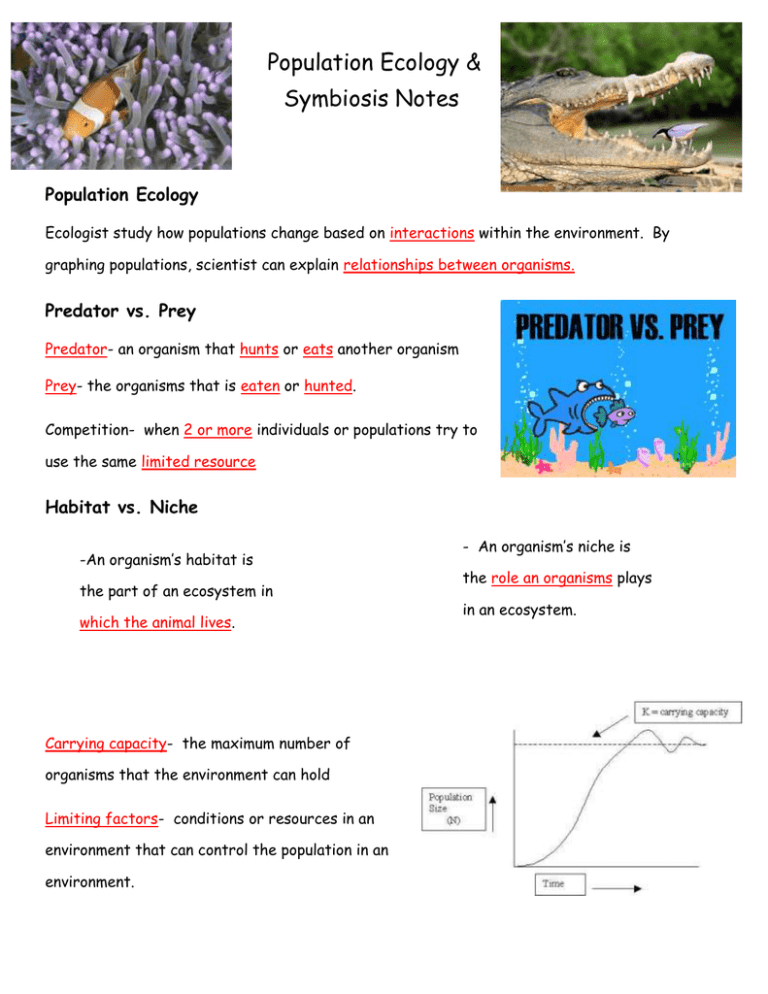
Population Ecology & Symbiosis Notes Population Ecology Ecologist study how populations change based on interactions within the environment. By graphing populations, scientist can explain relationships between organisms. Predator vs. Prey Predator- an organism that hunts or eats another organism Prey- the organisms that is eaten or hunted. Competition- when 2 or more individuals or populations try to use the same limited resource Habitat vs. Niche -An organism’s habitat is the part of an ecosystem in which the animal lives. Carrying capacity- the maximum number of organisms that the environment can hold Limiting factors- conditions or resources in an environment that can control the population in an environment. - An organism’s niche is the role an organisms plays in an ecosystem. Symbiosis in an Ecosystem Some species have a very close interaction with other species •Symbiosis- a close long-term relationship between two or more species •Individuals in a symbiotic relationship can benefit from, be unaffected by, or be harmed by the relationship Three types of Symbiotic Relationships 1) Mutualism 2) Commensalism 3) Parasitism Mutualism A symbiotic relationship in which both organisms benefit. Ex: Bacterial living in your intestine The bacteria get a plentiful food supply from you and in return you get vitamins from the bacteria produced Commensalism A symbiotic relationship in which one organisms benefits and the other is unaffected. Ex: Sharks and remora Parasitism A symbiotic relationship in which one organism benefits while the other is harmed Ex: tapeworm and human, tomato hornworm and wasps Mutualism Commensalism +/+ +/0 Parasitism +/- Both organisms benefit One organisms benefits, other unharmed One organism benefits, other is harmed

